Will those who led the financial system into crisis ever face charges?
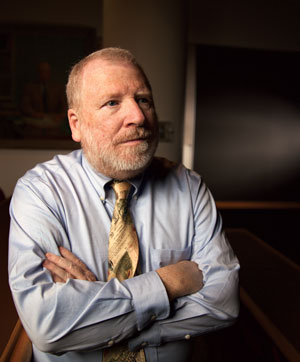
Bill Black. Photograph by Wayne Slezak.
Then Bill Black took the stand for the defense and he made the jury laugh.
It was August 2014, and by then many if not most potential jurors likely knew that major financial institutions had been implicated in residential mortgage-backed securities fraud that played a big role in the global collapse of financial markets in 2008. But now the bankers themselves were in effect put on trial. Defense lawyers projected a flier on the screen in the courtroom that indicated the mortgage company the conspirators were accused of bilking was itself involved in the overall scheme.
The flier had been circulated by the alleged fraud victim, GreenPoint Mortgage Funding. A subsidiary of Capital One Financial Corp., GreenPoint specialized in making loans without verifying a borrower’s ability to pay—”stated income loans” in the language of regulators; “liar’s loans” in the wake of the 2008 financial collapse.
Under a drawing of the proverbial three wise monkeys, the ad’s text paralleled the original message of willful ignorance. But it did so touting the lack of scrutiny prospective borrowers could expect in getting a loan: “Hear no income, speak no asset, see no employment: Don’t disclose your income, assets or employment on this hot, new, flexible adjustable rate mortgage!”
As an expert witness for the defense, Black went straight at GreenPoint and the bankers behind them on direct examination. He was asked about the intended audience for the flier. “They were using it for subprime [borrowers], and that means people who have known credit defects, which means they have a history of not repaying their loans,” Black told the jury.
That got the laughs.
Black’s expertise long preceded the scandal at hand, making his defense testimony in U.S. v. Charikov all the more ironic. He made his bones prosecuting fraud back in the savings and loan crisis during the 1980s and early ’90s. As a senior financial regulator, he was a leader in bringing criminal and civil cases against individuals to clean up a then-unprecedented scandal involving officials looting their own financial institutions, largely through self-dealing and extreme risk-taking. More than 1,000 were convicted, many of them high-level.
When the defense team asked Black to be their expert, he not only agreed; he did so at no charge and spent two weeks in Sacramento and hundreds of hours on the case.
Black has been a constant critic of the Justice Department’s failure to prosecute lenders with the same verve they’ve gone after borrowers, and his testimony reflected that concern. The lenders didn’t care about misstatements on loan documents, Black testified and the defense argued, because they intended to make the loans no matter what. They wanted to push through as many mortgages as possible and collect their fees and bonuses, and then claim the loans met rigorous underwriting standards, selling them in large lots to other financial institutions and investors.
Black’s message was effective. The four defendants were acquitted.
“When the defense has the jury literally laughing at the government, it’s powerful,” says John Balazs, a Sacramento lawyer who represented defendant Vitaliy Tuzman. “You could just see it in the looks on the faces of prosecutors and FBI agents.”
In the years since the crash, federal prosecutors have used splashy press conferences to announce top banks’ multibillion-dollar settlements (typically paid by shareholders) in cases arising from the subprime mortgage mess. But criminal prosecutions have been reserved almost exclusively for the borrowers. And in Charikov, which Black believes is the only case in which the defense has been allowed to show that lenders could also be culpable, the jury reaction indicates that the issue hits a nerve.
“Not to excuse wrongdoing by some borrowers, but clearly these were the business plans of large financial institutions, undertaken by human beings within them and, I presume, at the direction of senior executives in furthering the business plan,” says Phil Angelides, a former California state treasurer who chaired the federal Financial Crisis Inquiry Commission’s probe of the causes of the meltdown of 2007-2010.
The Financial Crisis Inquiry Report, released in 2011, was particularly pointed in its criticism of Wall Street, which it found had taken advantage of unprepared regulatory agencies that had been methodically defanged through deregulation over several years. The report noted a term coined on Wall Street that captured the carefree wheeling and dealing in the run-up to the meltdown: “IBGYBG”—”I’ll be gone, you’ll be gone.” The term, the report states, “referred to deals that brought in big fees up front while risking much larger losses in the future.”
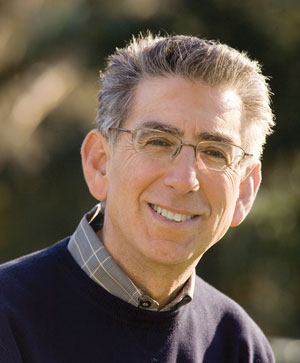
Phil Angelides.Photograph Courtesy of Phil Angelides.
The report also pointed out that the three credit rating agencies failed to properly evaluate mortgage-backed securities, partly under pressure from the financial institutions that were paying for their own products to be rated. When many of the securities had to be downgraded in 2007 and 2008, the economic state of siege began. The FCIC report called the credit rating agencies “key enablers of the financial meltdown,” having allowed loans that were beyond risky.
For years the DOJ has come under withering criticism for not going after high-level executives and other officials in top banks and lending institutions. Black put it succinctly while discussing the Sacramento acquittals: “They’ve been chasing mice—in this case Russian-American mice—while watching the lions roam free.”
Last September, the department in effect admitted that it had been wrong all along when it announced a new policy prioritizing prosecution of individuals in corporations who might have engaged in criminal acts, and requiring the companies to provide any pertinent evidence before receiving credit in settlement negotiations for cooperating.
Then in November, news reports suggested that federal prosecutors were considering criminal cases against executives from two banks for selling toxic residential mortgage-backed securities in the years leading up to the 2008 financial meltdown. They are the Royal Bank of Scotland and JPMorgan Chase & Co. The latter entered into a $13 billion civil settlement in 2013 with the DOJ, the Securities and Exchange Commission and a host of other entities. Though the accompanying statement of facts didn’t say so, the investigation was built in part on internal documents from 2006 concerning bad GreenPoint loans.
Yet for many critics, questions remain: Why no criminal prosecutions? And if some now are in the works, what took so long?
“There should have been a serious investigative effort by prosecutors to see who made what decisions at what time and whether those individuals, from line personnel to the most senior executives, crossed a legal line,” Angelides says. “It’s like Bill Black says: If you don’t look, you won’t find.”
BLACK’S LONG LOOK
William K. Black, 64, got a sweet mix of validation and vindication in Sacramento. He suppressed glee on the witness stand, even as he made the jury laugh.
But Black is bemused that the hard lessons learned in the S&L crisis were lost—or, more precisely, suppressed down the memory hole—through resumption of deregulation of the financial industry by the mid-1990s, just as banks began to turn to more complex forms of structured finance. He had left his regulatory work with the Office of Thrift Supervision, which replaced the Federal Home Loan Bank Board, and moved to academia in 1993. Black did so, he says, soon after “we were told in an affirmative order that we were to refer to and think of the industry we regulate as our customers.”
As part of the renewed deregulation regime, criminal referrals were no longer deemed acceptable tools, he says, and thus there have been virtually none in the aftermath of the residential mortgage-backed securities debacle. The much smaller S&L crisis had accumulated more than 30,000 such referrals.
Black, having become an expert criminologist (albeit noncredentialed at the time) through hands-on experience in the S&L cleanup, decided to get a doctorate in the field and now is an associate professor teaching both economics and law at the University of Missouri at Kansas City. He and his wife, June Carbone, had gone there in a package deal, but in 2013 she took a position at the University of Minnesota Law School. Black regularly drives 6½ hours on Interstate Highway 35 between Kansas City and their home in Minneapolis, where he is also a scholar-in-residence at Minnesota Law.
In 2005, when the impending financial crisis was obvious to some and under the radar to many, he published a book, The Best Way to Rob a Bank Is to Own One: How Corporate Executives and Politicians Looted the S&L Industry. It lays out Black’s theory of control fraud, his criminological term for looting a corporation from the inside, and details the recipe that he believes diagnosed the subprime mortgage debacle early on.
For years Black has explained control fraud in news stories and scholarly articles, on television, by blogging, in court and through legislative testimony—and, given his passion and gift of gab, probably in elevators as well. In Black’s view, high-level executives receiving compen-sation based on short-term profits are able to devise ways to inflate assets while hiding risk—creating an illusion of profitability while often ensuring the inevitable collapse of those assets.
His basic recipe for mortgage-backed securities fraud includes rapid growth as the yeast (and likely telltale ingredient of crime):
• Appraisal fraud: Appraisers complained that from 2000 through 2007, lenders would blacklist them if they refused to inflate values of homes, with 11,000 of them signing petitions—including printed names and addresses—presented to government officials.
• Liar’s loans: These first surfaced during the S&L crisis under the name “low documentation” and caused some losses. They grew as if on steroids in the early 2000s as lending took on more and riskier features, and seemingly everyone got caught up in the fast-expanding bubble of home sales.
• Unsafe securities: Toxic loans were packaged into securities for sale to investors and, through fraudulent warranties and representations, marketed as high quality.
BLACKBALLED
While his expertise gained purchase in the FCIC report and the Sacramento trial, Black has largely been on the sidelines over the past decade—though with a prominent perch as a knowing expert in news stories and analysis, watching a catastrophe unfold in patterns and practices he recognized early on.
In the late 1980s and early ’90s, he was suing, and sometimes liquidating, financial institutions and was also training regulators—agents from the FBI, the IRS criminal investigation division, the Secret Service, and state and federal prosecutors.
These are just a few of Black’s various jobs and titles during those years: Federal Home Loan Bank Board litigation director, deputy director of the Federal Savings and Loan Insurance Corp., and senior deputy chief counsel of the Office of Thrift Supervision.
Today, Black is better received elsewhere as an adviser to countries such as Ecuador, France, Iceland and Ireland, where they’ve picked his brain for ways to handle their own financial crises. “I’m a serial whistleblower,” Black says in a verbal shrug, explaining that he was advised as an associate in the early 1980s at Squire Sanders & Dempsey (now Squire Patton Boggs) in Washington, D.C., to avoid career-limiting gestures, or CLGs.
Black mentions an example: After getting his PhD, he taught at a major university graduate school. The faculty voted to grant him tenure, Black says, but a former boss on an S&L commission sent in a galley review of his then-forthcoming book that got him blackballed. That former boss held fast to the theory that it was the moral hazard of deposit insurance that led to the crisis, and Black’s book refuted that idea.
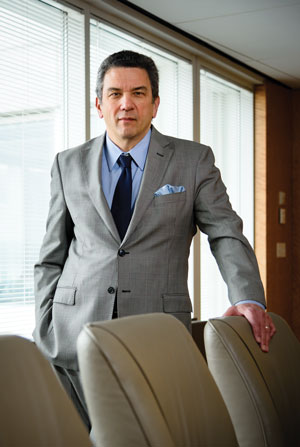
Solomon Wisenberg. Photograph by David Hills.
For a while, events served to buffer him from more immediate consequences of CLGs. The need to both end and clean up the S&L crisis was important to many of those in power who otherwise might limit one’s career. Black says his efforts were aided by the fact that one high-level regulator had the ear of deregulator No. 1: President Ronald Reagan.
Though the Reagan administration pushed governmentwide deregulation as a top priority, the S&L crisis was getting so bad by the mid-1980s, Black says, that the president acceded to the wishes of the chairman of the Federal Home Loan Bank Board, Edwin Gray, who wanted to reregulate the industry and root out its problems. Black attributes this to the fact that Gray was a personal friend of the Reagans.
Black and other regulators at the Federal Home Loan Bank Board and the Federal Savings and Loan Insurance Corp. worked with the Justice Department to create a top-100 list of the worst S&L fraud schemes, and the prosecutions flowed. But the recent crisis began to take root soon after the Sept. 11 terrorist attacks, which led the FBI to reassign hundreds of white-collar crime investigators to antiterrorism efforts.
“You just don’t have as many competent FBI agents as there used to be doing white-collar,” says Solomon Wisenberg, who practices that specialty in the D.C. office of Nelson Mullins Riley & Scarborough. “It takes a few years for them to develop expertise. And you don’t have prosecutors with this experience.”
During the S&L crisis, Wisenberg was the chief of financial fraud investigations for the U.S. attorney’s office in the Western District of Texas, leading as many as 100 criminal investigations there and in North Carolina. He won the DOJ Director’s Award for work on the Victoria Savings Association scandal, which was on the top-100 list and in which he got nine convictions in 1993.
“Bill Black was my expert in that,” says Wisenberg. “It was my biggest case ever as a prosecutor.”
Another of Black’s possible CLGs brought him and his work into the public’s eye. He played a major role in revealing the Keating Five scandal, in which five U.S. senators tried to prevent regulators from taking Charles Keating’s Lincoln Savings and Loan into receivership. Keating had given significant campaign contributions to all of them; all were heavily criticized in an ethics investigation and one was formally reprimanded.
Keating, who wanted Black fired, went to prison and taxpayers spent more than $3 billion bailing out the financial institution he and others ran into the ground.
In a similar dustup, then-House Speaker Jim Wright of Texas tried to get Black fired for cracking down on Vernon Savings and Loan, which had a 96 percent default rate on its loans and later failed, requiring a $1.3 billion bailout. Wright resigned in disgrace after an ethics investigation that had included a look at his move against Black.
COMPLAINTS RAIN
Little more than a month after the not-guilty verdict in Sacramento, a similar case in Minnesota was dropped a couple of days before trial—just after Black was listed as a witness for the defense.
“It was going to be funny,” says Jordan Kushner, a Minneapolis lawyer who represented defendant Patrick Henry Adams. The government’s expert witness worked for Bank of America, which in January 2008 had acquired Countrywide Financial (which had made the loans in question). Pretrial disclosures indicated she would testify that liar’s loans are appropriate for borrowers who are self-employed because their incomes are hard to verify.
“And Bill Black was going to turn that around and say, ‘All you have to do is look at their tax returns. Who exaggerates income on their tax returns?’ “
Complaints about the failure to prosecute bank executives have come from many quarters: Congress, the public, former prosecutors, FCIC chairman Angelides, and in edgy essays by federal judge Jed Rakoff in the New York Review of Books. The DOJ’s own Office of the Inspector General, in a 2014 audit report (PDF), noted the agency fell short in its investigations, which were not “prioritized at a level commensurate with its public statements,” and had significantly inflated numbers in its claims of actions against individuals and in money settlements with financial institutions.
There has been just one conviction of a bank executive in the subprime scandal: Credit Suisse’s Kareem Serageldin, who pleaded guilty in 2013 to a scheme of hiding more than $100 million in losses on mortgage-backed securities. Judge Alvin Hellerstein of the Southern District of New York sentenced him to 30 months in prison, but in doing so suggested that Serageldin was a scapegoat for “an overall evil climate inside that bank.”
That same year, then-Attorney General Eric Holder told the Senate Judiciary Committee that criminal charges against a big financial institution might harm an already weak economy, launching the derisive “too big to jail” meme.
Though the government has secured a reported $190 billion in civil settlements, Black points out that this is a tiny fraction of the likely tens of trillions in losses. But within each settlement has been a tantalizing detail: no waiver of possible criminal charges, including against individuals.
In February 2015, not long before announcing he would resign and in an apparent attempt to bolster his flagging legacy, Holder made his boldest statement about pursuing individuals responsible for the subprime mortgage crisis. It came during the Q&A session after he spoke on criminal justice and sentencing reform at a National Press Club luncheon.
“I don’t know if I’m making news now or not,” Holder began, telling the audience that he’d asked prosecutors to re-examine pending cases “and report back in 90 days” on whether they might bring civil or criminal cases against individuals.
Though made as an aside, the announcement became the main story. But given the soft-touch approach to bankers as the mortgage scandal unfolded, Holder’s claim to increased aggressiveness was eclipsed immediately by here-we-go-again pessimism.
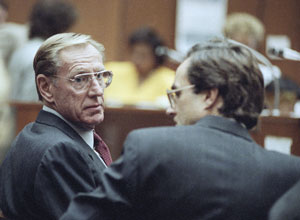
Charles Keating confers with one of his attorneys in a Los Angeles courtroom. Charged in a 42-count fraud indictment, Keating served nearly five years in prison for misdeeds tied to the collapse of Lincoln Savings and Loan, which was bailed out at a cost to taxpayers of more than $3 billion. AP Photo.
The 90-day period ended in May and went largely unnoticed, with no announcements and few if any news stories or follow-up.
“One would hope that having settled cases with the entity, DOJ would already have received an enormous amount of information on who did what,” says Brandon Garrett, who finds it odd that the attorney general would ask prosecutors to look in their closets to see if they had missed anything huge. Garrett’s 2014 book, Too Big to Jail: How Prosecutors Compromise with Corporations, details how federal prosecutors have largely ceased bringing criminal cases against individuals, instead offering deferred prosecution agreements to the corporations where the potential defendants work.
“So no small fish are charged and no big fish are charged, but there’s a deal with the aquarium,” Garrett says. “The agreement describes specific actions by individual fish: Middle Manager A or Supervisor B. You’d think the prosecutors know who they are.”
It was widely thought that a five-year statute of limitations on criminal fraud now trumps any possible criminal prosecutions. But a little-used statute enacted during the S&L crisis can stretch the time limit to 10 years.
Under FIRREA—the Financial Institutions Reform, Recovery and Enforcement Act of 1989—both civil money penalties and criminal charges can be brought under a 10-year statute of limitations against individuals whose actions “affected a financial institution.” In June, in U.S. v. Heinz, the 2nd U.S. Circuit Court of Appeals at New York City affirmed a trial judge’s ruling against defendants in a matter that closely tracked what happened in the subprime mortgage scandal. It knocked down some major questions about how broadly the statute can reach.
Three executives with UBS AG, a Swiss financial services firm, were convicted of rigging bids for municipal bond contracts. They argued that their employer, UBS, was a co-conspirator and had paid $160 million in a civil settlement with the Justice Department. But the judge ruled their individual actions affected the financial institution, and thus fell under the FIRREA exception.
On the heels of that ruling, the DOJ announced in September that it would be prioritizing white-collar crime, marking Attorney General Loretta Lynch’s first major policy initiative after succeeding Holder. In a guidance memorandum sent to federal prosecutors, Deputy Attorney General Sally Yates said that culpable individuals, as well as corporations, need to be a focus in any civil or criminal investigation. “Such accountability is important for several reasons,” she noted. “It deters future illegal activity, it incentivizes changes in corporate behavior, it ensures that the proper parties are held responsible for their actions, and it promotes the public’s confidence in our justice system.”
But now, even that longer 10-year window is closing fast: The busiest period for packaging and selling residential mortgage-backed securities came in 2005 and 2006.
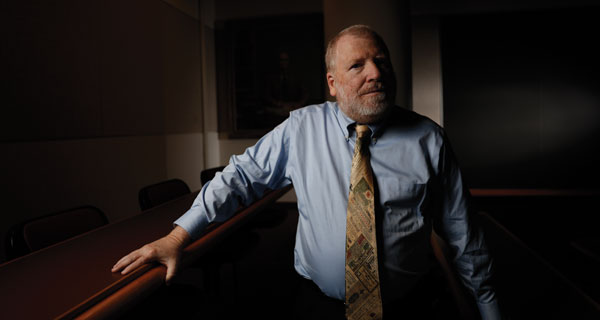
Bill Black. Photograph by Wayne Slezak.
BLOWING THE WHISTLE
Even without fact-loaded criminal re-ferrals, there still is one way to build cases against individuals, Black says, and that involves whistleblowers. While not necessarily optimal, it’s the best available option and could lead to major criminal cases.
He ticks off the names of several whistleblowers. One is Richard Bowen, who ran Citigroup’s underwriting for purchasing mortgage loans. Bowen wrote a memo in 2007 warning several of the bank’s highest executives about shoddy loans—and was eventually eased out of the job. The following year he testified before the SEC about the problems and provided documents.
Citigroup paid $7 billion in a settlement with the DOJ in July 2014, and the statement of facts squared with what Bowen told the SEC.
“Bowen handed [the DOJ] that on a platinum platter, and they never credited him,” Black says.
Likewise, a significant piece of the investigation that JPMorgan Chase paid billions of dollars in 2013 to make go away came from a whistleblower. The scenario was sketched out in the statement of facts (PDF) accompanying the agreement.
The statement noted that an employee involved in a purchase of loans had warned an executive in charge of due diligence, as well as a managing director in trading, about a $900 million package of loans. The employee warned that the underlying loans were of such poor quality that they should neither be bought nor securitized. After the bank purchased them anyway, “she submitted a letter memorializing her concerns to another managing director, which was distributed to other managing directors. JPMorgan nonetheless securitized many of the loans. None of this was disclosed to investors.”
The whistleblower and the loan originator, GreenPoint Mortgage Funding, were not named in the statement of facts, nor were any of the bankers. But eventually Alayne Fleischmann’s whistleblower story was told and retold in news and opinion pieces that asked why there had been no indictments. Although she has freely discussed the issues before, Fleischmann has now withdrawn from the media spotlight. She declined to be quoted for this article.
For four years Fleischmann was an associate in the capital markets department at Cadwalader, Wickersham & Taft, a major New York City law firm that dealt with securities work for JPMorgan Chase. In 2006, she took a nonlawyer job with JPMorgan Chase handling quality control over mortgage-backed securities.
Two months after she started, her boss instituted a policy forbidding emails between the bank’s compliance and due diligence offices. To her, the order seemed designed to help push through bad loans.
Fleischmann’s warnings to the bank’s directors about the problems with GreenPoint loans became a crucial bargaining chip in the $13 billion settlement, and no doubt would loom large in any criminal investigation.
The negative reaction of a mock jury put together by a law firm working for JPMorgan Chase reportedly helped move the bank to settle. That jury read Fleischmann’s internal correspondence and knew of the email policy.
Fleischmann was let go in early 2008, along with other JPMorgan Chase employees in a layoff. A native of Canada, she now lives in Vancouver, British Columbia. Fleischmann is likely to be the DOJ’s star witness for possible criminal charges—should they ever happen.
BLACK’S BLASTS
Black is quick to vent about how little recognition and how much hassle befell several whistleblowers, despite the fact that “virtually every major DOJ [civil] case against the largest banks was made possible by whistleblowers,” he says.
“The most obvious way they can aid prosecutors is as fact witnesses about the actions of their bosses and reactions to the whistleblower’s warnings,” he says. “These were not disaffected employees. They were trying to protect their banks from harm. The retaliation they suffered should be a prosecutor’s dream for showing the guilty minds of senior people.”
Just ask Bill Black.
This article originally appeared in the February 2016 issue of the ABA Journal with this headline: “Bill Black’s Quest: Will those who led the financial system into crisis ever face charges?”
Sidebar
From S&L to RMBS
There are many differences between the S&L crisis and the residential mortgage-backed securities scandal: While S&L losses totaled about $150 billion, those from subprime mortgages are believed to be in the tens of trillions of dollars. And the S&L problems often arose because owners and executives of financial institutions treated them as personal piggy banks. The more recent mortgage mess came about as executives and lower-level functionaries in lending institutions acted as fee-and-bonus fetching cogs— of varying importance and knowledge—along big, moneymaking mechanisms in loan origination, processing, securitizing and subsequent sales.
U.S. Attorney Benjamin Wagner of the Eastern District of California acknowledges there was “a lot of recklessness in the real estate market in the 2000s and plenty of blame to go around,” but he defends his office’s targeting of hundreds of borrowers and no lending executives.
“It’s easy to generalize that bankers or appraisers are at fault, but in a criminal case you have to look at the facts of each case to see if you can determine who was intentionally committing fraud beyond a reasonable doubt,” Wagner says. “In every case you make difficult calls on who you can show committed fraud.”
SELF-DEFRAUDING?
In a 2010 Huffington Post story, Wagner was quoted as saying that, in part because lenders lose money when loans prove fraudulent, it would be difficult to convince a jury they are guilty: “It doesn’t make any sense to me that they would be deliberately defrauding themselves.”
That notion has proved significant in stemming indictments of lending executives. It had been the view of Alan Greenspan, chair of the Federal Reserve for nearly 19 years. In October 2008, two years after he stepped down, Greenspan told a congressional hearing that he had believed bankers would not engage in such practices, but he admitted later he could see a flaw in his reasoning.
“This modern risk-management paradigm held sway for decades,” Greenspan explained. “The whole intellectual edifice, however, collapsed in the summer of last year.” That was in the summer of 2007; the intellectual edifice may have crumbled at that point, but it would take another year before the chickens came home to roost with the collapse of Lehman Bros. in mid-September and the subsequent $710 billion bank bailout, which was announced by Treasury Secretary Hank Paulson on Oct. 13, 2008.
Greenspan seemingly would have learned a similar lesson in the ’80s. Before taking over at the Fed in 1987, he had represented Charles Keating in efforts to get regulators to back off from Lincoln Savings and Loan. As a consultant, Greenspan produced a report saying the lender posed “no foreseeable risk” for depositors. Keating was using S&L depositors’ money for direct investments in real estate projects. Greenspan also put his name on a study approving of such direct investments by S&Ls, looking at 34 of them that were doing so and were reporting greater profits than others.
“A year later,” Bill Black says, “half those S&Ls were dead; 20 months after the study, all 34 were dead. So these direct investments were not just riskier; they were cyanide.”
“The S&L crisis was completely different from this more recent one, where the regulatory agencies were paralyzed by reports of high profits,” Black explains. “Back then we realized the profits were too good to be true and prioritized that as the problem, so we used receiverships, lawsuits and criminal referrals.”



